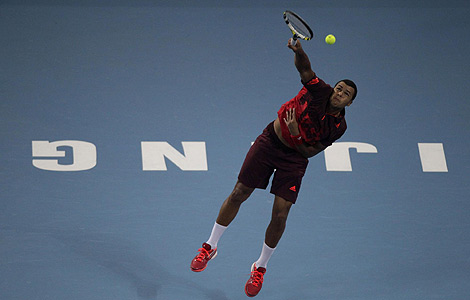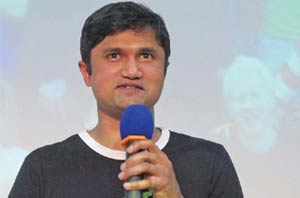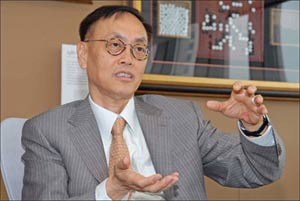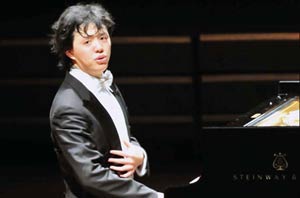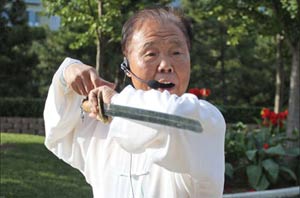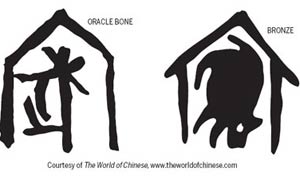Finally, the eyes have it - glasses that fit
Updated: 2011-10-14 10:44
By Kelly Chung Dawson (China Daily)
|
|||||||||
NEW YORK -When Alexandra Peng was growing up, finding glasses for her Asian features was difficult. The glasses she purchased slid down her nose to rest on her cheeks, often impairing her vision. Like many optically challenged Asians, she wore standard-fit glasses well into adulthood.
But after years working in the eyeglasses distribution industry, Peng decided that Asian-fit glasses were long overdue. In 2009, she launched TC Charton, a line devoted to providing eyeglasses tailored for the Asian bone structure.
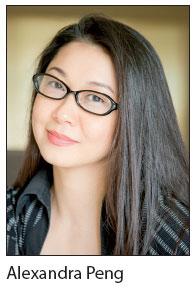
"My friends and family often came to me to complain about not being able to find glasses that fit right," she said in an interview with China Daily. "We're talking about beautiful Asian girls who truly think there's something wrong with the way they look because they cannot find glasses that fit them properly. It hurt for me to hear that. One day I said, 'That's it, it's time.' I wasn't going to sit around waiting for someone else to do it."
For many years, Peng herself did not realize that the standard glasses sold in most opticians' offices are designed for Caucasian features, she said. The main difference between Asian and Caucasian bone structure is that Asians generally have a lower nose bridge, and less pronounced eye sockets, she said. Opticians will occasionally adjust the nose pad to accommodate the difference, but the glasses will often fit incorrectly as a result.
Even glasses in Asia are not designed with Asian features in mind, she said. The only other line in the US that is catering to Asian customers is Oakley, which offers an Asian-fit collection.
"I worry that over time it could be psychologically damaging for Asians," she said. "We live in a non-Asian country, we are already considered minorities. I grew up believing, 'Why do I look so different? Why don't I look like them?'"
To launch the line, Peng studied the Asian anatomy.
"We started from scratch," she said. "We went through so many prototypes to get this right. I'm constantly staring at Asian people's faces, looking at different angles and translating them into technical numbers."
Since opening in 2009, TC Charton (named for her Chinese initials and her married surname) has grown at a rate of 150 percent each year, Peng said. The collection is now offered in 50 to 60 US locations, and will expand to both Canada and Hong Kong within the next year, she said. Eventually, the plan is to reach all of China, South Korea and Japan.
Asian markets generally have a more avante-garde fashion-forward aesthetic, Peng said. The collection would likely adjust to that demand, she said.
Sharon Lumetta, an optician at Uber Eyes Optometry in Palo Alto, Calif, said that the feedback to the line has been favorable so far.
"It's a revolutionary design and concept, and we've gotten an incredible response in our store," she said. "When you put a traditional fit on an Asian person, it's like putting someone else's shoes on. When I used to try and fit standard glasses on an Asian person, it was unsatisfactory for both of us. I could never give style, fashion and fit and have it work. Everything was a compromise, but now because of this, the prescription is more precise."
In March of this year, TC Charton launched a kids' line of eyeglasses based on the same principle.
"I think for kids, the need is even more urgent," she said. "People forget that glasses are a medical device. They should fit perfectly, and if they don't you are compromising something and it could be damaging to your eyesight. Most Asian kids I've seen wearing glasses, they are wearing glasses that slide down so low they are seeing through the top of the frame."
John Ly, a customer in San Francisco, recalled his struggles with improperly fitting glasses.
"Prior to my discovery of TC Charton, I always thought it was normal for my eyewear to leave marks on my cheeks and temple," he said. "I thought it was normal for my eyes to strain after a long day of wearing glasses. "It never occurred to me before that glasses should conform to my physical features like a good pair of jeans. I accepted the imperfections of glasses as normal since my friends and family of the same descent also had common complaints."
China Daily



